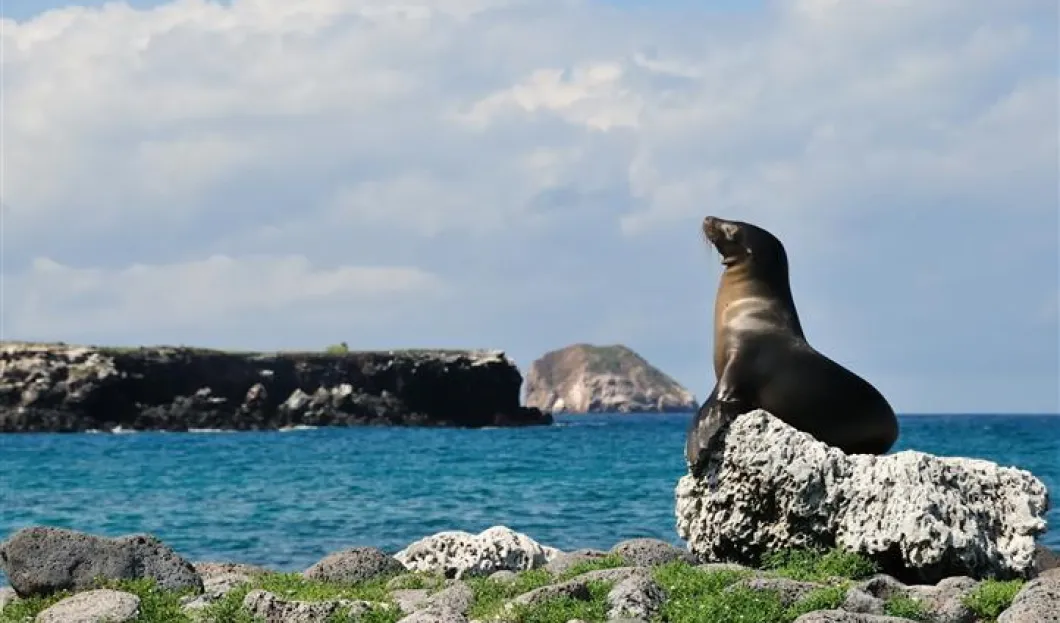
In the collective imagination, the Galapagos Islands are the huge open-air natural zoo visited by Darwin in 1835 on his voyage on the Beagle; it is full of iguanas, giant tortoises, sea lions and all kinds of endemic animals basking in the heat of volcanic landscapes. Well, this is just what the Galapagos are, as spectacular as we had always dreamed about. And what makes this Ecuadorian archipelago so unique is that its fauna has no fear of humans. One can be within only 30 centimetres of an albatross, an iguana or a sea lion without them moving.
The islands are so dry, arid and lacking in food that evolution did not give large mammals any chance. This is the realm of reptiles and seabirds. But that is precisely why it is a very fragile territory that was declared a national park where visits are completely controlled. Here is an instruction manual if you want to treat yourself to a journey back into prehistory:
Booking
First contact the chosen hotel or boat and make a booking for the desired dates. Pre-registration (required) for the visit is then done online, specifying dates and accommodation. Within a certain period of time you will receive an email authorizing entry to the Galapagos. The maximum number of visitors allowed by the islands is 110, 000 annually (although some years this figure is as high as 200,000).
Fees
At the Guayaquil airport you have to complete the Transit Control Card (TCT), which costs 10 dollars (about 8.80 euros). And on arrival in the Galapagos you have to pay an entry fee of $100 (about 88 euros).
Getting there
Flights always leave from Guayaquil, on Ecuador's mainland coast, to go to the island airports of San Cristobal, Baltra and Isabela. LAN has daily flights from Guayaquil to Baltra and San Cristobal starting at 335 euros round trip.
Getting around on the islands
There are only two ways to explore the Galapagos. On land: staying in a hotel on one of the four populated islands and from there move around that island or to other islands with a local travel agency (it is forbidden to walk around in the national park without an official guide). Or by boat. This second option is not the cheapest, but it is the most practical, because it allows you to see more places in less time, especially the most remote uninhabited islands.
The best season
May and June are the best months to visit the Galapagos, because they coincide with the breeding season. In November and December it is mating season for the seabirds, and with the clash of ocean currents there is more food in the sea and therefore more activity.
The most highly recommended Islands
Isabela
This is the largest island and has the most breath-taking landscapes. It is also most suitable for visitors staying on land, as there are many things to see in the interior, and other nearby islands can be accessed from there. The most spectacular scenic views are on the West Coast, in the Bolivar channel. Isabela has seven kilometres of white sand beaches planted with palm trees.
Floreana
A small and sparsely populated island (only about 200 people live there), very convenient for those who want to do scuba diving and snorkelling. It has beautiful volcanic landscapes at the summit and a lagoon with a flamingo colony. A quiet and peaceful life, with only four options for accommodation.
San Cristóbal
This is the location of Puerto Baquerizo Moreno, the capital of the islands, with all kinds of accommodation and services. Just outside the village they built a very modern and well-equipped interpretation centre that is worth a visit to learn more about the archipelago. Right there is the beginning of a well-paved walkway leading up to a lookout and then to the Baquerizo Beach, the bay where the Beagle docked for the first time, and where Darwin first set his foot on the Galapagos. From Puerto Baquerizo excursions can be arranged to Punta Pitt (snorkelling with sea lions) or to Cerro Brujo.
Bartolomé
It is uninhabited and can only be reached in an authorized boat. It has wonderful volcanic scenery and a trail created through the park for viewing the wildlife. The famous rock called Pináculo can be found here.
Española
One of the most interesting islands because it is uninhabited and has large colonies of seabirds. You can only get there on a cruise boat or by booking a tour from San Cristobal. It is full of marine iguanas lazing in the middle of the quay, and you can pass a few centimetres away from them. A trail approved by the park allows you to tour a good portion of the island.
Santa Cruz
The Baltra airport, built on a neighbouring islet, is one of the airports receiving most flights, so Santa Cruz is a must-see for many tourists. It is not the most spectacular island, but it does have some interesting places to visit, including the breeding centre for giant Galapagos tortoises, close to the Charles Darwin Research Station just outside Punta Ayora.










